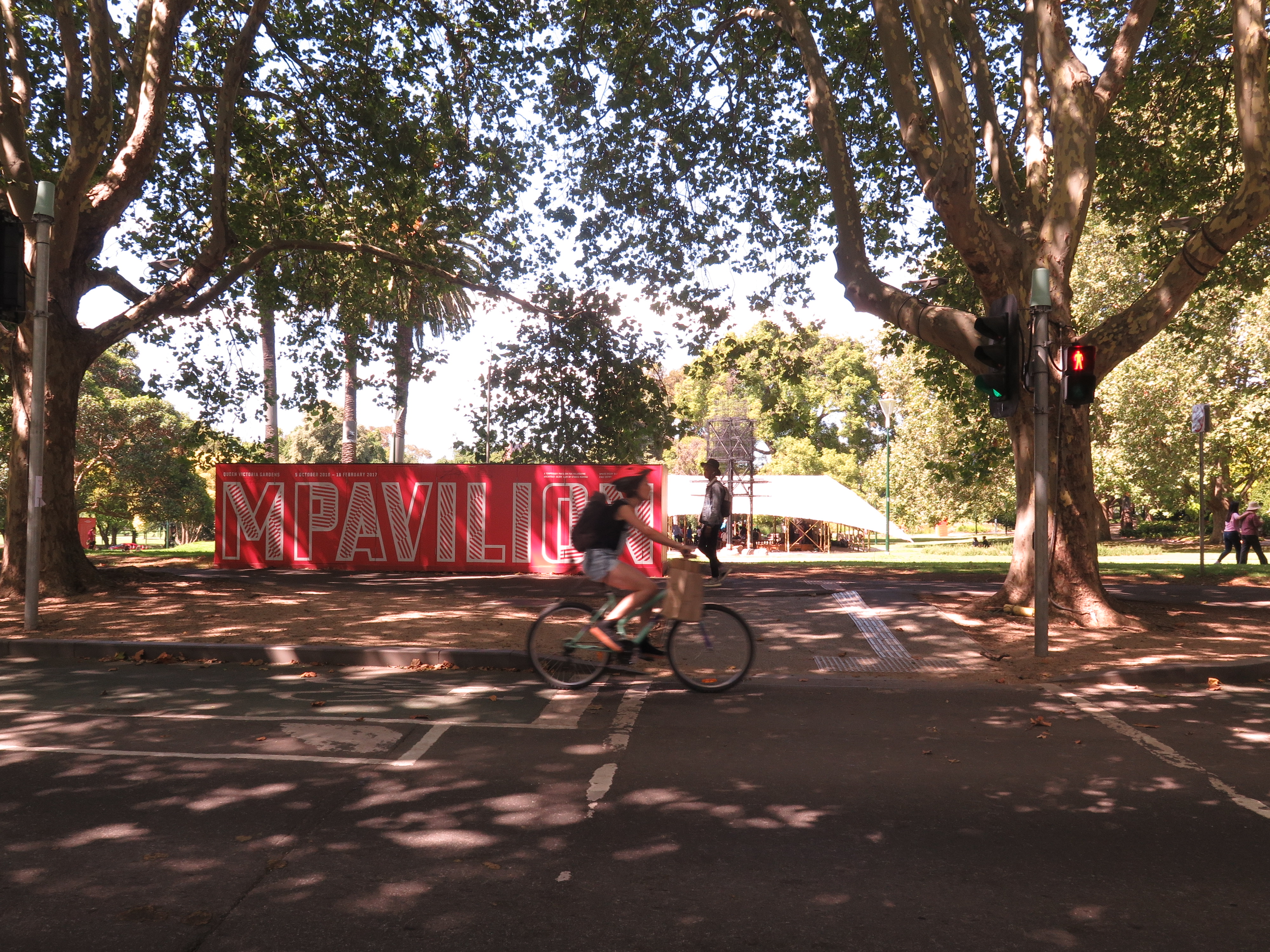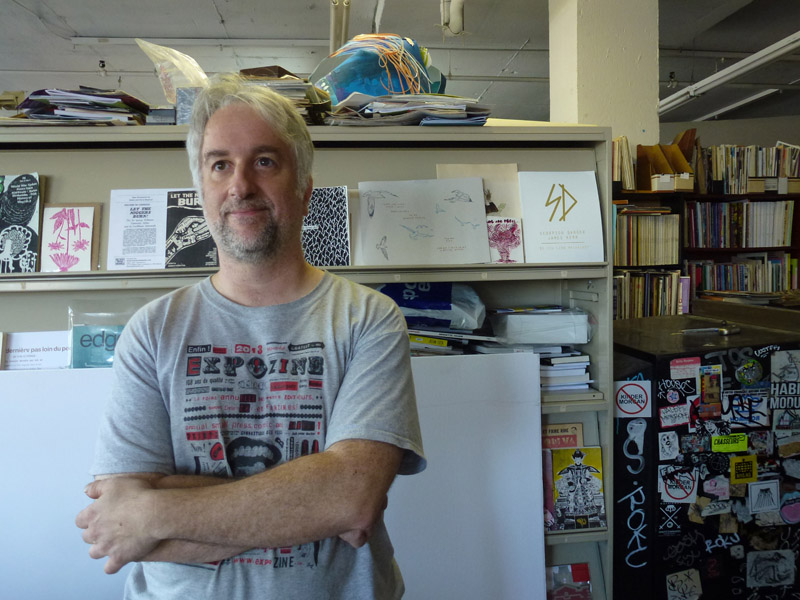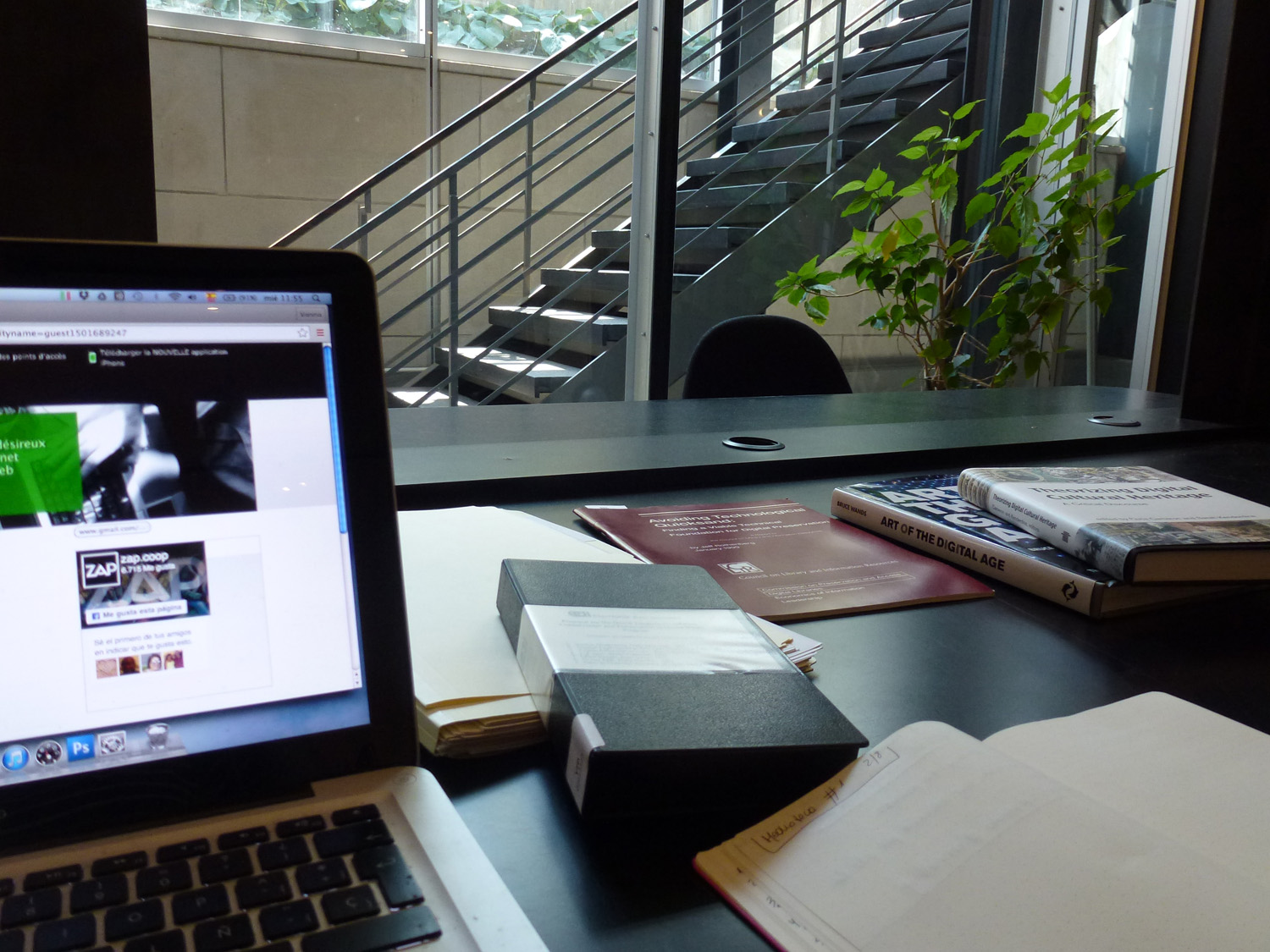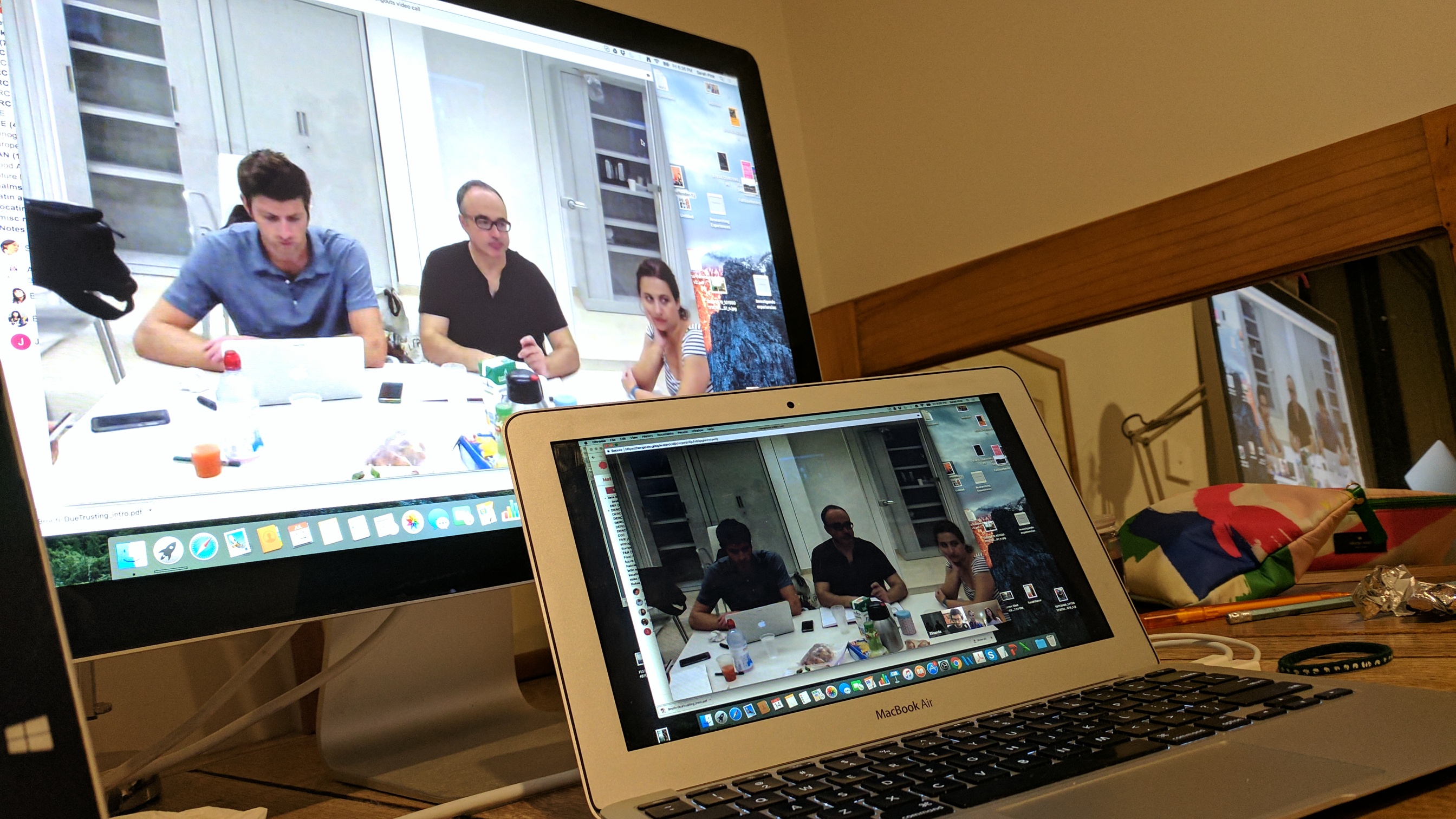During this February I had the opportunity to participate in the Digital Ethnography Summer School organized by the professor Sarah Pink (also part of the d-future project) and other scholars from the Digital Ethnography Research Center of the RMIT, in Melbourne, Australia. I made an intense journey of ethnographical field work with a team of researchers from Australia and other parts of the globe. The participants of the team were: Cheryll Soriano (from The Philippines); Raymond June (from San Francisco) Dino Ge Zhang (from China and located in Melbourne) and Joanne Byrne and Indigo Holcombe James (both from Melbourne).
During those days we focused on understanding the performative construction of temporary spatial experience within MPavilion. MPavilion is a temporary pavilion in the Queen Victoria Gardens in the Melbourne’s Southbank Arts Precinct. For four years, this pavilion has every year a different structure designed by a commissioned architect. This space functions as event hub for architecture and design that during Summer brings an entire program of talks, workshops, performances and installations.
From some of the events organized by MPavilion we were able to experience, I can pinpoint the Hypnapod project, developed by designed by Unconscious Collective in collaboration with Jenny Underwood at RMIT University’s School of Fashion & Textiles. It was a project with suspended cardiophonic snooze hanging pods equipped with sensors speakers which amplify heartbeats in real-time and produced a unique soundscape.
Although it was a fascinating example of the entanglement of art, design, and technology with a temporary architecture structure, this event, as such others, had to be booked in advance which sometimes could be a limiting factor for people to engage with this temporary space.
Having this in mind, while doing digital ethnography in this temporary space we detect various forms of encountering with MPavillion across both digital (social media and official website) and material spaces. Following the notions of spatial and temporal practices of Lefebvre(1991) Merrifield (2006) and Schatzki (2015), we could perceive that the ephemerality of the space, the construction of its structure, and the way the events were organized and promoted were important factors at the moment of generating experiences and performing social activities. We also could detect that these spatial practices in a temporary space such as MPavilion, are intertwined with imaginaries of inclusive or exclusionary spaces, and sometimes the first encounter (in both digital and material manner) can disrupt the engagement a person might have with the space in the near future.







